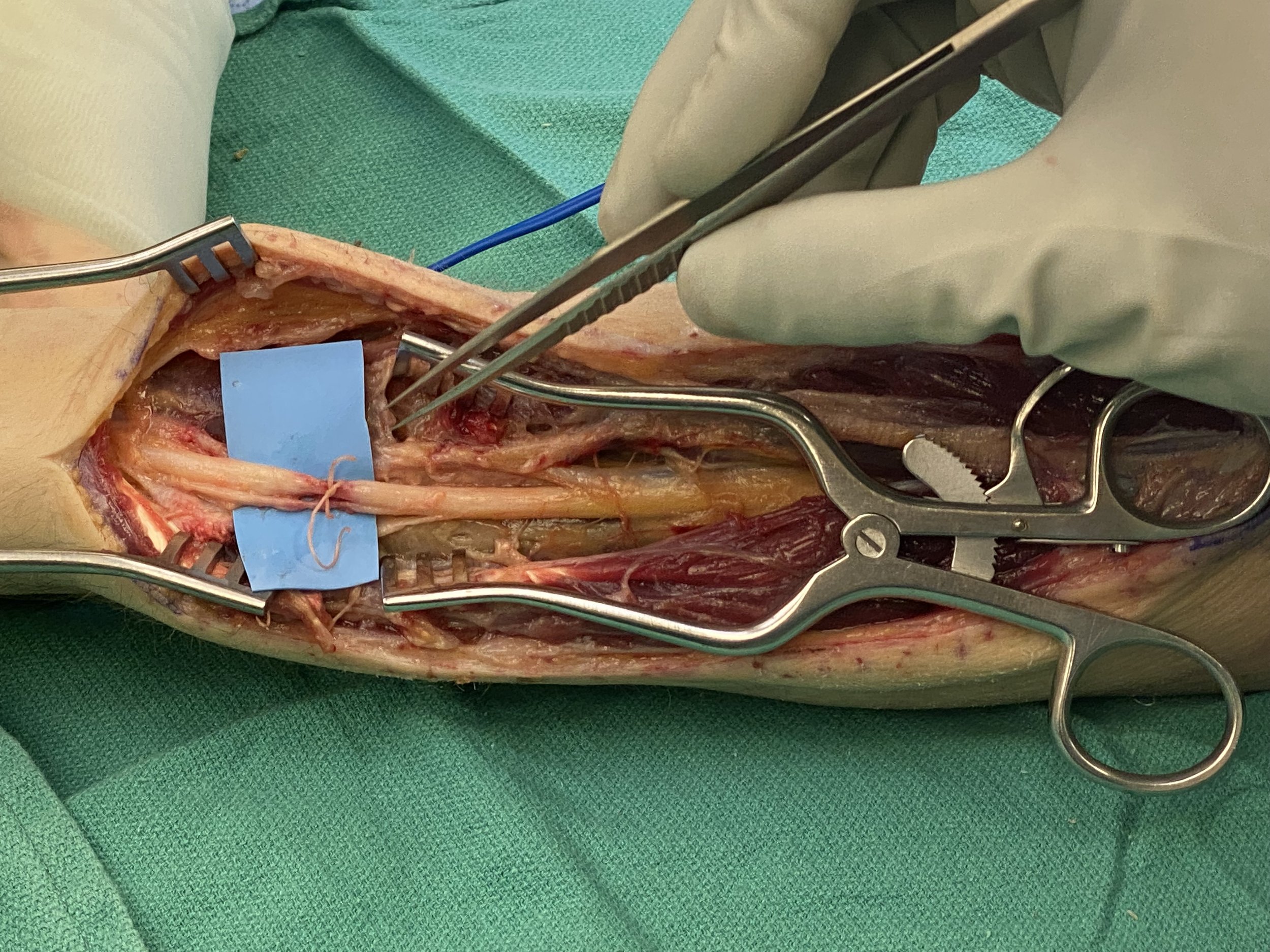
Peripheral Nerve Injuries
Traumatic injuries can happen to the peripheral nerves like the radial, median, and ulnar nerves in the upper limb. Or the sciatic, tibial, or peroneal nerves in the lower limb. This can result from a laceration causing discontinuity of a nerve, or a neuroma in continuity, or a stump neuroma. Like other nerve surgeries early diagnosis and microscopic repair, or grafting will offer the best recovery.
Nerves are more vulnerable to injury than one might think.
When a nerve is suffers from a “clean cut” to the nerve anywhere from the spine to about 2/3rds the way up to the finger we can suture the nerve. This is best performed under high power loupes or microscope with a very fine suture. Often nerve injuries are missed at the time of injury due to the messy nature of injuries.
How to not miss a nerve injury?
Although it is not always possible, the best way to not have a nerve injury missed is to be seen as early as possible by a peripheral nerve surgeon. When feasible that should even be done during the initial wound exploration at the time of injury. When that is not feasible the patient should be seen very soon after, particularly if they have a new sensory or motor deficit down stream of the injured nerve. Sensation and motor should always be compared to the non-injured side. If it is within 24 hours of the injury and exploration under anesthesia of the injury should be considered.
Why is timing so important?
The best results for a nerve repair happen if they are done correctly the first time. When done immediately there is still axonal loss but often the recovery can be near perfect. After a few days the ends of the nerve form a bulbus mass called a neuroma (discussed in more detail on the neuroma page). These bulbus mases can be separate on the upstream and downstream end or they can be fused as a neuroma in continuity. The neuromatous tissue must be cut back to healthy nerve, this often results in a gap. That means that instead of connecting the two ends we now have to bridge the gap in the nerve with either a cadaver nerve or a nerve taken from the leg. The results are often very good but not as good as if it were fixed end to end on the day of injury. If a nerve injury is suspected please call (888) 265-0660 to insure you are seen as soon as possible.
How are nerves repaired?
In order to understand how to repair a nerve it helps to break down the structure of a nerve. An easy metaphor to explain a nerve cross section of a nerve is sort of like an electric cable. With numerous wires (axons) grouped together(fascicles) then bundled in plastic (nerve). The metaphor however is imperfect so we will stop there. The truth is axons can crisscross and the topography of the nerve can differ at different levels. To complicate matters further the sae nerve can have both sensory and motor fascicles. They also have mixed sensory and motor fascicles. The correct matching of these fascicles is essential for success. Back to our metaphor if a motor wire is connected to a sensory wire the signals will not be compatible so nothing will happen. For that reason having a nerve repair by an experienced nerve surgeon with the appropriate magnification and knowledge of the correct anatomy is imperative.
